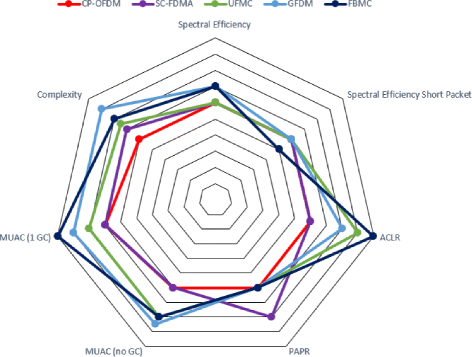

They may not always produce a satisfactory characterization of equipment immunity to portable transmission sources used within a very short distance, say 20 cm or less. These standards are excellent documents for their intended purposes and certainly can be used to simulate disturbances created by portable transmitters used at distance from equipment potentially suffering interference.

IEC 6 provides details for performing immunity tests on in-scope equipment in transverse electromagnetic (TEM) devices. IEC 6 includes a detailed description for the test setup, chamber validation procedure and test procedures required to perform radiated immunity testing in a reverberation chamber. The current edition of this standard even states “Particular considerations are devoted to the protection against radio-frequency emissions from digital radiotelephones and other RF emitting devices.”. IEC 6 covers immunity of electronic equipment to radiated RF electromagnetic energy, establishing both test levels and test procedures. One may ask why do we need a new test standard for this phenomenon. The challenges that will need to be addressed to provide repeatable, meaningful test results will be explored. This article will explore some of the aspects of this situation, including the possibility of developing a new international test standard focused on close proximity immunity. These questions, and more, are being considered in multiple segments of industry, including standards developing organizations and various user segments. What are the devices we must consider as sources of interference? What devices need to be hardened against new or changing interferences? How do we determine adequate immunity levels? Are existing test methods and standards sufficient? If not, are wholesale modifications required, or can existing standards be used with some (minor?) modifications? Which characteristics of the transmitted signals are important to the evaluation of disturbance potential? This new-world reality creates some interesting challenges and opportunities for EMC professionals. The types of equipment that may be adversely affected is nearly endless, including desk-top computers, point-of-sale terminals, gas pumps, vehicle control systems, computer systems and other portable electronics, to name just a very few. Contrast this proximity with the several meters or more of separation typical in the days before the use of portable devices with transmitters became so prevalent. The separation distance is often uncontrolled with separations of a few centimeters not being uncommon. Not only are more transmitting devices in use in all environments, the separation between any given transmitter and equipment that may be affected is generally decreasing. An unintended side effect of the proliferation of transmitting devices, however, is the increased potential for malfunctions of electronic equipment in operation close to where the transmitters are used.

The benefits of these devices are quite significant. No doubt, the great expansion of this technology has improved society in many ways. Table 1: A sampling of transmission systems
#Tetrapol fdma modulation professional#
(The experienced EMC professional can probably imagine the challenge this practice creates during an RF emission test!)Ī sampling of transmission systems is shown in Table 1. We even see active RFID tags imbedded in electronic equipment undergoing EMC testing. RFID tags and transponders are used for inventory in retail stores, monitoring the location of equipment of all kinds and tracking patients in medical settings. Other than the Boundary Waters Canoe Area Wilderness and the inner canyon of the Grand Canyon, it may be difficult to find any location without WiFi available. Smart phones, tablets and similar devices provide the ability for users to be connected to the internet any time, from any location using nearly any device. Intentional RF transmitting devices seem to be everywhere.


 0 kommentar(er)
0 kommentar(er)
